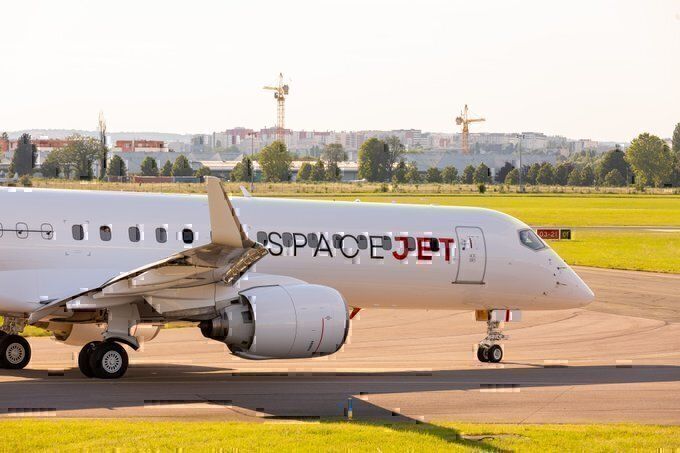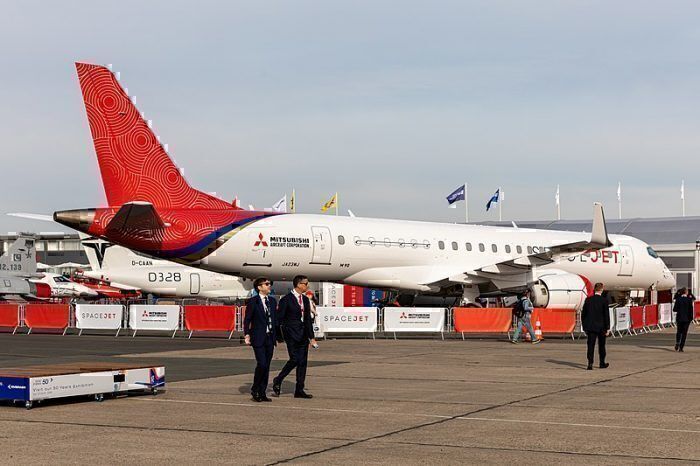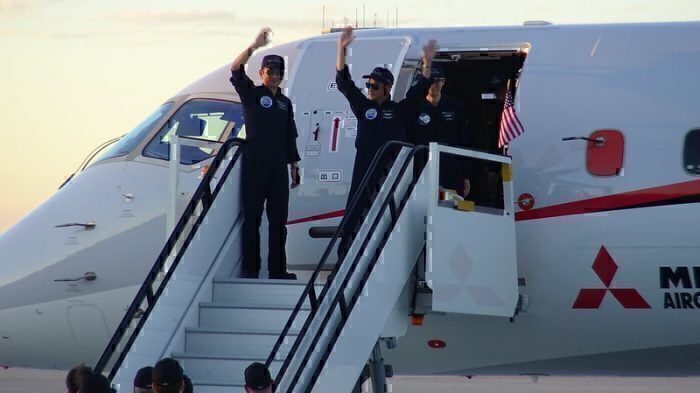Japanese industrial giant Mitsubishi Heavy Industries, the parent of Mitsubishi Aircraft Corporation, has today confirmed media reports that suggested that the delivery of its first SpaceJet M90 will not take place until after March 2021.
While announcing its third-quarter earnings, Mitsubishi said, according to CH-Aviation, that the "first commercial delivery of SpaceJet is expected to be in FY2021 or later." In 2021 the Japanese financial calendar runs from April 2021 and ends in March 2022.
What this now signals to the public is a delay of nine months and that the first delivery to All Nippon Airlines (ANA) will not be happening this summer.
The SpaceJet program is eight years behind schedule
Besieged with problems and an accrued debt of around JPY174.6 billion yen (USD1.6 billion), the SpaceJet program was already eight years behind schedule.
During a recent press conference, Mitsubishi President Seiji Izumisawa said that the fifth SpaceJet aircraft had been completed in January and will begin test flights sometime during the spring.
Four Spacejet M90s are already undergoing certification in the United States at the companies' test facilities in Moses Lake, Washington. The fifth Spacejet was delayed due to wiring and other systems.
While displaying the aircraft at the Paris Air Show back in June, Mitsubishi decided to replace the older MJR (Mitsubishi Regional Jet) branding for the more futuristic-sounding SpaceJet.
Mitsubishi announced in Paris that they were building the M100
While at the world’s premier air show, the Japanese multinational also announced that they were building a slightly smaller variant of the jet which would be named the SpaceJet M100. The SpaceJet M100 will be a 76-seat aircraft that is small enough in size to satisfy scope clause requirements that bar American regional carriers from operating bigger aircraft.
Designed to comply with the regulations governing regional jets in the United States, the SpaceJet M100 meets the weight restriction of a MTOW of 86,000lb/39t. It also meets other conditions that allow it to be flown by lower-paid pilots.
The SpaceJet was designed to compete with Embraer
First launched in 2008 with the intention of entering service by 2013, the SpaceJet M90 is a twin-engine regional jet aircraft that can be configured to seat between 70 and 90 passengers. The SpaceJet M90 was intended to be competition for the Brazilian built Embraer E-Jet family of aircraft, which by this time next year may very well be owned by Boeing as the Seattle planemaker looks to compete with the Airbus A220.
It has been a long hard road for Mitsubishi when it comes to their aircraft program, which must first see the SpaceJet M90 enter service before they can move on to the smaller Spacejet M100. As it looks now, the larger Spacejet M90 could enter service in about a year's time with the smaller Spacejet M100 following a year later.
So far the SpaceJet M90 has a memorandum of understanding for 15 jets from an unnamed American airline and a commitment for 50 M90s from Phoenix, Arizona based Mesa Airlines. In not so good news for the Japanese company, Trans States Holdings, a long-time fan of the program canceled its order for 50 M90s.



